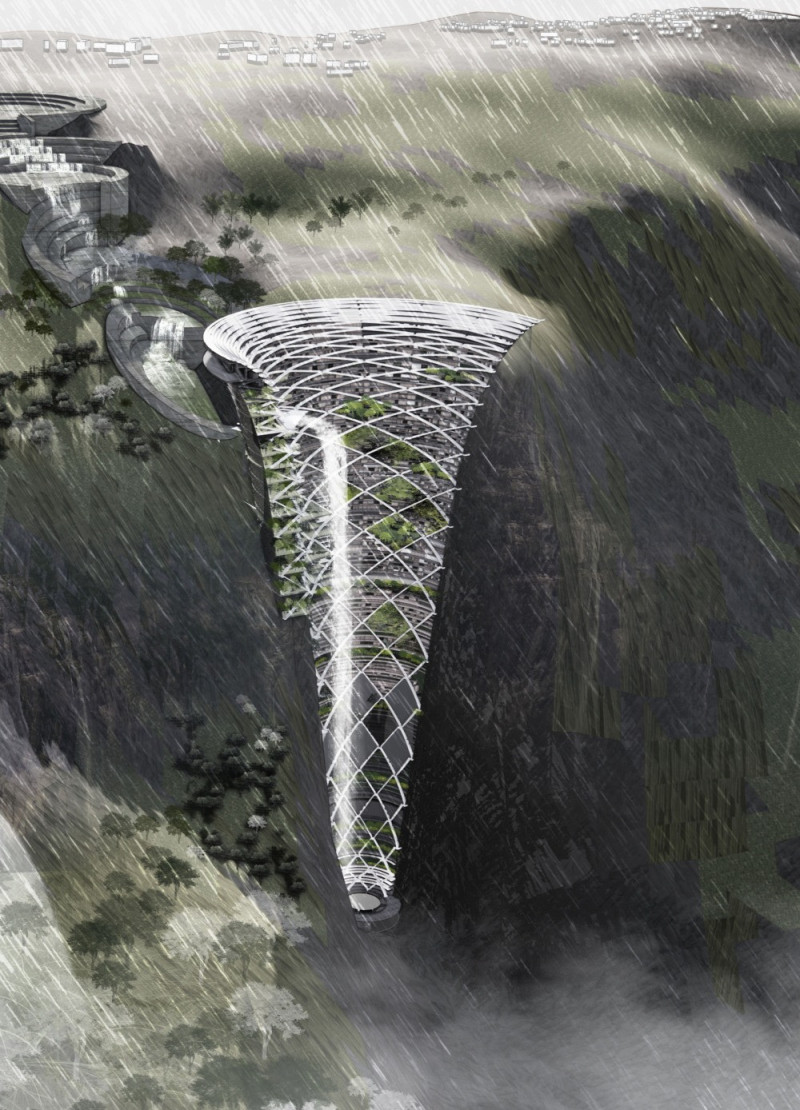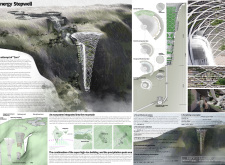5 key facts about this project
Sustainability and innovative design are the hallmarks of this project. The structure employs advanced energy systems, notably hydroelectric power generation, which addresses local energy needs while minimizing environmental impact. Additionally, the design incorporates rainwater harvesting techniques, allowing for efficient collection and purification of rainwater. This approach not only conserves water but also reduces the building's reliance on external water sources.
The Energy Stepwell features distinct architectural elements that set it apart from conventional designs. One significant aspect is its spiral form that rises in a conical shape, resonating with the region's natural topography. This design optimizes natural cooling through strategic positioning and facilitates wind patterns, contributing to energy efficiency. The use of materials, including reinforced concrete and structural steel, ensures structural integrity while allowing for flexibility in the architectural framework. Large glass sections promote light penetration and foster a visual connection between occupants and the surrounding landscape.
The project is compartmentalized into functional layers that enhance its utility. The electricity storage layer accommodates renewable energy technology and integrates a sewage purification system that processes wastewater effectively. The hydropower generation component harnesses kinetic energy to produce electricity, completing an efficient energy loop within the building.
Furthermore, communal spaces are interwoven throughout the structure, promoting social interaction and local agriculture. This design philosophy fosters a sense of community among residents, emphasizing the well-being of its users alongside environmental considerations. The Energy Stepwell serves as a model for future architectural efforts aimed at addressing sustainability challenges through innovative design.
For individuals looking to understand the intricacies of the project, exploring the architectural plans, sections, and designs can offer deeper insights into its unique approaches and comprehensive functionalities. Delve into the architectural ideas that make the Energy Stepwell a noteworthy example of contemporary architecture.























